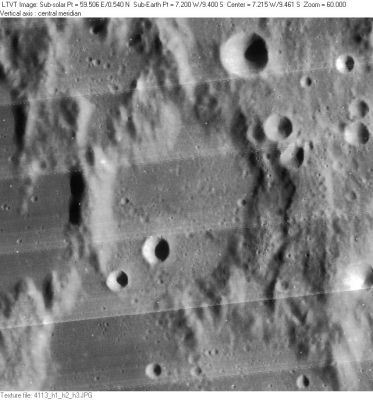Palisa
Contents
Palisa
|
Lat: 9.4°S, Long: 7.2°W, Diam: 33 km, Depth: 0.54 km, Rükl 43 |
LO-IV-113H Palisa is the irregular feature in the center. On its southwest floor is 5-km Palisa P. Other IAU-named features visible in this view are 8-km Palisa D near the upper margin; 5-km Palisa A (the largest of the two craters on the northeast rim) and 4-km Palisa W (directly to its west – the largest of the craters along the right margin). The bottom of the frame is occupied by the northern part of 70-km diameter Davy Y, the lettered crater containing the famous Catena Davy.
Images
LPOD Photo Gallery Lunar Orbiter Images Apollo Images (one of Apollo 14's orbital Hasselblad photographs of Palisa is online as "Ralisa").- DannyCaes Jan 29, 2011
Maps
(LAC zone 77D1) LAC map Geologic map LM map LTO map
Description
Description: Wikipedia
Additional Information
- Depth data from Kurt Fisher database
Westfall, 2000: 0.54 km
Viscardy, 1985: 0.9 km - Satellite craters Palisa C, D, T and W are on the ALPO list of banded craters
Nomenclature
Johann Palisa (December 6, 1848 - May 2, 1925) was a Czechoslovakian-Austrian astronomer. He was a prolific discoverer of asteroids, discovering 122 in all. In 1872, at the age of 24, Palisa became the director of the Austrian Naval Observatory in Pola. While at Pola, he discovered his first asteroid, 136 Austria, on March 18, 1874. Along with this, he discovered twenty-seven minor planets and one comet.
LPOD Articles
Bibliography
